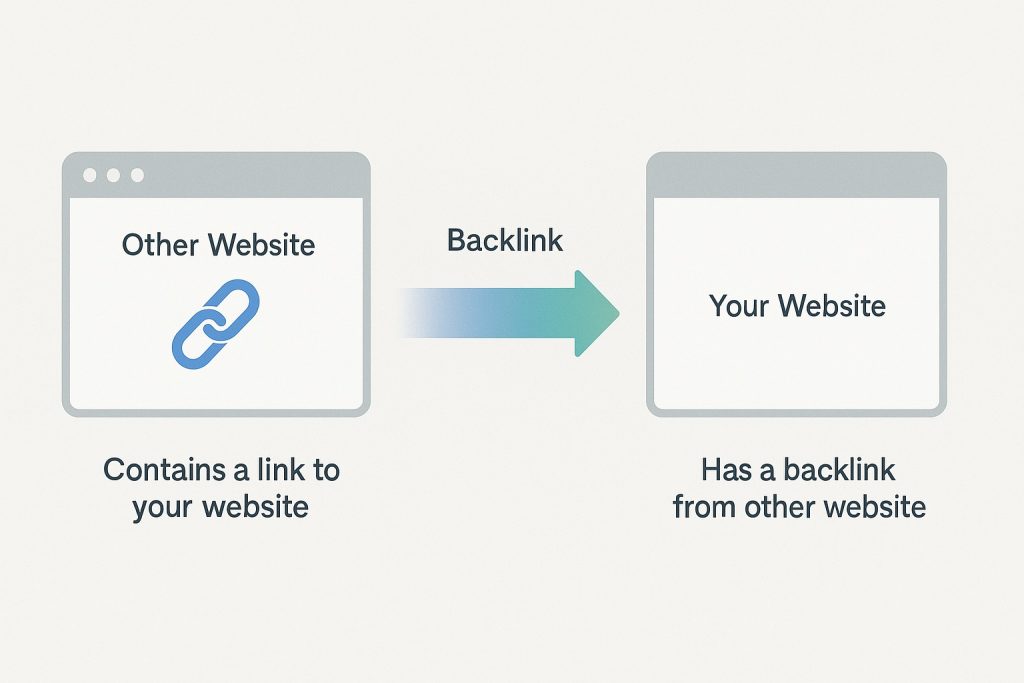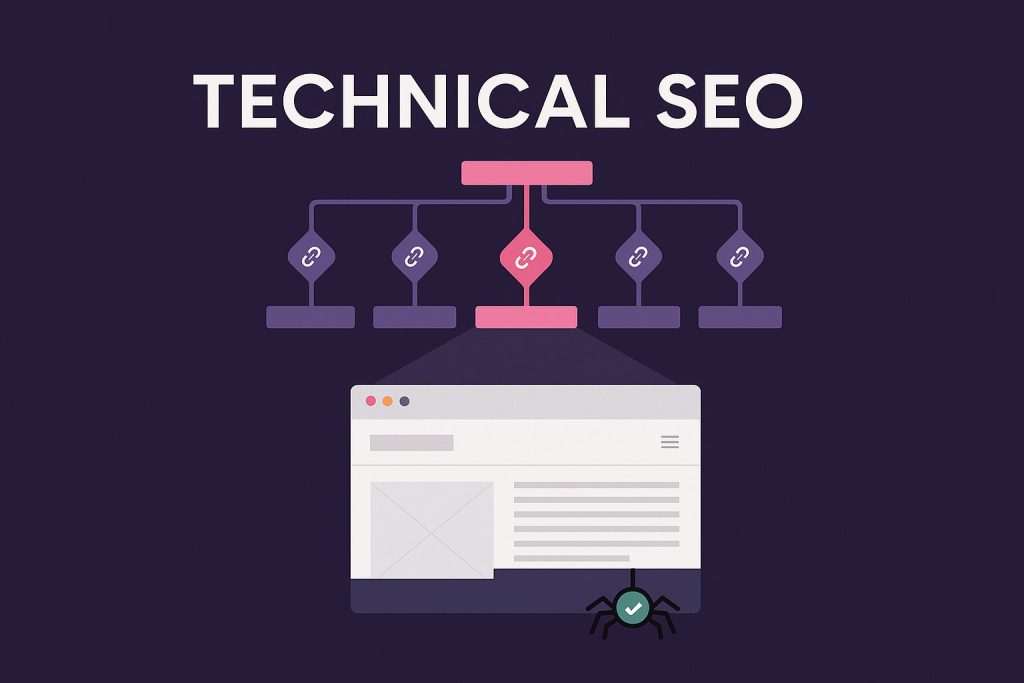Building a strong backlink profile is one of the most effective ways to improve your website’s search engine rankings. But not all backlinks are created equal. Some can propel your site to the top of search results, while others might do more harm than good.
Understanding the different types of backlinks and their value will help you develop smarter content strategies and target the right audiences. This guide breaks down everything you need to know about backlinks, from the fundamentals to advanced tactics that can boost your SEO efforts by learning from my complete SEO guide shared loaded seo insights.
What is a Backlink?
A backlink, also known as an “inbound link” or “incoming link,” is created when one website links to another. For search engines, these links act as citations or references. The more high-quality backlinks you have pointing to your site, the more authority you appear to have in the eyes of Google, which can lead to higher rankings in search results.

Backlinks can be categorized in many ways, but one of the most important distinctions is between “dofollow” and “nofollow” links.
- Dofollow links are the most valuable type for SEO. They pass “link equity” or “link juice” from the linking site to your site, directly influencing your search engine rankings. By default, most links are dofollow.
- Nnofollow links have a
rel="nofollow"attribute. This tag tells search engines not to pass any link equity. While they don’t directly boost your rankings, they can still drive referral traffic and contribute to a natural link profile.
Now, let’s explore the different ways these links can be created.
What Are Backlinks in SEO for success?
A backlink is any link from one website to another. Also known as inbound links, incoming links, or external links, backlinks act as digital recommendations. When Website A links to Website B, it’s essentially vouching for the quality and relevance of that content.
Search engines like Google use backlinks as a key ranking signal. They view these links as votes of confidence the more quality backlinks your site has, the more authoritative it appears. This can lead to higher rankings, increased organic traffic, and ultimately, more leads and sales.
Why Are Backlinks Important?
Backlinks serve three critical functions in SEO:
They demonstrate expertise and authority. When reputable websites link to your content, they’re signaling to search engines that your site is a credible source of information. This is particularly important for demonstrating Experience, Expertise, Authoritativeness, and Trustworthiness (E-E-A-T), factors that Google considers when ranking pages.

They drive referral traffic. Backlinks aren’t just for search engines. They create pathways for real people to discover your content. A well-placed link on a popular industry blog can send a steady stream of targeted visitors to your site.
They help your content rank better. Google’s PageRank algorithm still a core component of how the search engine works and relies heavily on backlinks. Research consistently shows that pages with more backlinks from authoritative sources tend to rank higher in search results.
What Makes a Backlink Valuable?
Not every backlink will boost your SEO. Quality matters far more than quantity. Here are the key factors that determine a backlink’s value:
Authority of the linking domain. Links from established, trusted websites carry more weight with topical authority for websites than links from unknown or low-quality sites. A single backlink from a major publication like Forbes or The New York Times can be worth more than dozens of links from obscure blogs.
Relevance of the content. Search engines prioritize links from websites in related niches. If you run a fitness blog, a backlink from a health and wellness site will be more valuable than one from a website about gardening.
Link placement and context. Links embedded naturally within the main content of a page (contextual links) are more valuable than links buried in footers, sidebars, or comment sections.
Anchor text. The clickable text of a link provides context about the linked page. Descriptive anchor text that includes relevant keywords can enhance a backlink’s value, though over-optimized anchor text can appear manipulative.
Follow vs. nofollow attribute. Dofollow links pass authority to the linked page, while nofollow links tell search engines not to count them as endorsements. Both have their place in a healthy backlink profile.
Internal Links vs. External Links
Before diving into backlink types, it’s important to understand the distinction between internal and external links:
Internal links connect pages within your own website. They help search engines understand your site structure and distribute authority across your pages. While internal links are important for SEO, they’re not considered backlinks.
External links point from one website to another. These can be broken down into two categories:
- Outbound links point from your website to other sites
- Inbound links (backlinks) point to your website from other sites
This guide focuses specifically on inbound links—the backlinks that can improve your search rankings and drive traffic to your site.
The 5 Main Types of Backlinks
To make sense of the backlink landscape, it helps to categorize links by their characteristics. Here are the five main categories:
1. Backlinks by Behavior
These categories describe how search engines should treat the link:
Dofollow backlinks are the default type of link. They don’t require any special HTML attributes and tell search engines to follow the link and pass authority to the destination page. These links act as genuine endorsements and can directly impact your search rankings.
Nofollow backlinks include the
rel="nofollow"attribute, which instructs search engines to ignore the link for ranking purposes. While they don’t directly boost SEO, nofollow links can still drive valuable referral traffic and contribute to a natural-looking link profile.Noreferrer backlinks contain the
rel="noreferrer"attribute, which prevents referrer information from being passed in HTTP headers. Visits from these links appear as direct traffic in analytics tools rather than as referrals.
2. Backlinks by Relationship
This category describes how the backlink was acquired:
- Natural backlinks (also called organic backlinks) are the gold standard. They occur when another website voluntarily links to your content without any prompting or incentive. These links arise because someone genuinely found your content valuable enough to reference.
- Manual backlinks are acquired through deliberate outreach and link-building efforts. This includes reaching out to website owners, pitching guest posts, or requesting links to your content.
- Reciprocal backlinks occur when two websites link to each other. While a few reciprocal links won’t hurt your SEO, excessive link exchanges can be viewed as manipulative by search engines.
- Sponsored backlinks (also called paid links) involve an exchange of money, products, services, or other value. These links should include the
rel="sponsored"attribute to signal the commercial relationship to search engines. - User-generated content (UGC) backlinks are created by a website’s users rather than its administrators. These links should include the
rel="ugc"attribute and often appear in comments, forums, or social media posts.
3. Backlinks by Content Type
This category describes where and how the link appears:
- Editorial backlinks are embedded within the main content of articles, blog posts, or other editorial pieces. These are typically the most valuable type of backlink because they indicate that a content creator or journalist deemed your content worthy of citation.
- Guest post backlinks appear in articles you’ve written for other websites. While these can be valuable for driving traffic and building relationships, Google recommends marking them as nofollow since they’re self-placed links.
- Profile backlinks come from author bios, business profiles, or user profiles on various platforms. These include profiles on business listing sites, social networks, or industry directories.
- Social media backlinks originate from posts, profiles, or shares on social platforms like Twitter, LinkedIn, or Facebook. Most social media links are nofollow, but they can still drive significant traffic.
- Syndicated backlinks occur when you allow your content to be republished on other sites. These should include a canonical tag pointing to the original content to avoid duplicate content issues.
- Directory backlinks come from business directories like Yelp, Google Business Profile, or industry-specific directories. While they don’t typically provide strong SEO benefits, they can improve local visibility and drive relevant traffic.
4. Backlinks by Anchor Text
The clickable text of a link provides context and can influence SEO value:
- Brand mention backlinks use your company or brand name as anchor text. These are natural-looking and help build brand awareness.
- Exact match backlinks use your target keyword as the anchor text. While these can be powerful for SEO, too many exact match anchors can appear manipulative.
- Partial match backlinks include variations or related terms to your target keyword. These provide a good balance between relevance and natural appearance.
- Generic backlinks use non-descriptive phrases like “click here” or “learn more” as anchor text. These are common but provide little context to search engines.
- Bare URL backlinks display the full URL as the anchor text, such as “https://www.example.com.”
- Image backlinks use images instead of text. Search engines rely on the image’s alt text to understand what the link is about.
5. Other Notable Backlink Types
Several specialized backlink types deserve mention:
- Resource page backlinks come from curated lists of recommended links on specific topics. These tend to be high-quality since they’re hand-picked by content creators.
- Infographic backlinks occur when other sites share your visual content and credit your website with a link. Infographics are highly shareable and can generate substantial backlinks.
- Video backlinks link to videos or their creators, often found in video descriptions on platforms like YouTube or in articles that embed your video content.
- Broken backlinks are links pointing to pages that no longer exist. You can identify broken links on relevant websites and suggest your content as a replacement a tactic known as broken link building.
- Unlinked brand mentions occur when websites mention your brand without linking to you. You can reach out and request that they add a link, turning a mention into a valuable backlink.
Tips for Building High-Quality SEO Backlinks
Now that you understand the types of backlinks, here are proven strategies for acquiring them:
- Create linkable assets. Develop content that naturally attracts links, such as original research, comprehensive guides, interactive tools, or compelling infographics. High-quality, unique content is the foundation of any successful link-building strategy.
- Leverage digital PR. Pitch data-driven insights to journalists using platforms like Help a Reporter Out (HARO). Being quoted as an expert can earn editorial backlinks from authoritative news sites and publications.
- Build genuine relationships. Connect with other professionals in your industry through networking, social media, and industry events. Strong relationships often lead to natural link opportunities.
- Fix broken links. Use tools to identify broken links on relevant websites, then reach out to suggest your content as a replacement. This provides value to the site owner while earning you a backlink.
- Offer testimonials. Provide testimonials for products or services you use. Companies often publish testimonials with a backlink to the contributor’s website.
- Participate in podcasts and webinars. Being a guest speaker or interviewee typically results in a backlink from the event page or show notes.
- Monitor your competitors. Analyze where your competitors are getting backlinks and target similar opportunities. Tools like Ahrefs and SEMrush can help with competitive backlink analysis.
- Reclaim unlinked mentions. Set up alerts for your brand name and reach out when someone mentions you without linking.
- Create tools and calculators. Interactive resources that provide value often earn backlinks as other sites reference them or embed them on their pages.
- Update and improve existing content. When reaching out for backlinks, offer to help websites update outdated information with fresh insights or better resources.
Backlinks to Avoid
Not all backlinks are beneficial. Some can actually harm your SEO:
Paid links without proper attributes. Buying dofollow backlinks violates Google's guidelines and can result in penalties. If you do pay for placement, always use the rel="sponsored" attribute.
Forum spam. Dropping links in random forum comments or threads with no context provides no value and can damage your reputation.
Low-quality directory links. Avoid spammy directories that exist solely to create backlinks. Focus on reputable, industry-specific directories instead.
Link exchanges at scale. A few reciprocal links are fine, but excessive link trading can be flagged as a link scheme.
Links from high spam score domains. Backlinks from websites with poor reputations can hurt your site's credibility.
Non-newsworthy press release links. Mass-distributed press releases filled with links add little value and can appear manipulative.
How to Monitor and Maintain Your Backlink Profile
Building backlinks isn’t a one-and-done task. You need to regularly monitor your backlink profile to ensure it stays healthy.
Use tools like Google Search Console, Ahrefs, or SEMrush to:
- Track new backlinks
- Identify and disavow toxic links
- Analyze anchor text distribution
- Monitor competitor backlink strategies
Set aside time each month to review your backlinks and make adjustments as
Master the Art of Link Building
Backlinks remain one of the most important ranking factors in SEO. By understanding the different types of backlinks, focusing on quality over quantity, and steering clear of shady tactics, you can build a free backlink profile that boosts your authority and drives long-term results.
Start by creating content worth linking to, then use the tips outlined here to earn high-quality SEO backlinks. Avoid the backlinks that could hurt your rankings, and regularly audit your profile to keep it clean.
The work you put into building a strong backlink strategy today will pay dividends in your search rankings tomorrow.
Building a Backlink Strategy That Works
The most successful backlink strategies focus on quality over quantity. Rather than chasing hundreds of low-value links, concentrate on earning a smaller number of high-authority, relevant backlinks.

Start by auditing your current backlink profile to understand where you stand. Identify opportunities to improve by analyzing competitors’ backlinks and looking for gaps in your own coverage. Then, develop a mix of tactics that align with your resources and brand goals.
Remember that link building is a long-term investment. Natural, editorial backlinks take time to acquire, but they provide lasting value. Guest posting and outreach can deliver faster results but require consistent effort. The most effective approach combines multiple tactics while always prioritizing relevance and quality.
As you build backlinks, monitor your progress using tools like Google Search Console, Ahrefs, or SEMrush. Track not just the quantity of backlinks but their quality, diversity, and impact on your search rankings.
Most importantly, focus on creating exceptional content that people naturally want to link to. When your content provides genuine value whether through original research, practical insights, or unique perspectives backlinks will follow.


